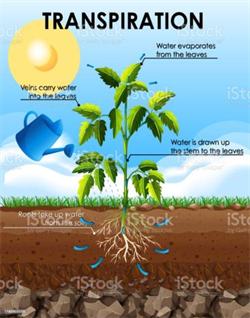Apr 16, 2025
Development of the 2025 Spring Melon (Cantaloupe) Crop
In the last issue of this UA Vegetable IPM Newsletter, I presented a melon (Cucumis melo ‘reticulatus’ L.) crop phenology model (Figure1; Silvertooth, 2025). This model can be useful in predicting and tracking crop development and identifying important stages of crop growth and development (crop phenology).
Use of a crop phenology model can be applied to basic crop management (e.g. fertilization, irrigation, harvest scheduling, pest management activities, labor, and machinery management, etc.). For use of the crop phenology model, good local weather data with heat unit information is needed. In Arizona we have an excellent weather system with the Arizona Meteorological Network, AZMET.
Since cantaloupes are a warm season crop, we use the86/55 ºF heat unit (HU) thresholds for phenological tracking. Key stages of growth or “guideposts” indicated in Figure 1represent the average or “target” values that are subject to a slight degree of natural variation, which is normal.
This melon crop phenology model was developed under fully irrigated and well-managed conditions. That is important since non-irrigated fields are more likely to experience water stress, which significantly disrupts crop development patterns.
Referring to the data from AZMET for several locations in the Yuma area, the HU accumulations (86/55 ºF thresholds) from 1 January 2025 to a set of four possible 2025 planting dates are listed in Table 1. The HU accumulations from 1 January2025 to 15 April 2025 for these sites are listed in Table 2.
The HU accumulations after planting (HUAP) for these four possible planting dates for three Yuma area locations to 15 April 2025 are shown in Table 3. The HUAP values in Table 3 are simply the difference between the values in Tables 1 and 2. An example for the Yuma Valley, 15 January 2025planting date is: HU - 73.1 HU = 645.6 ~ 646 HUAP.
The information in Table 3 can help serve as a reference to check for melon crop development in the field against this phenological model in Figure 2. Several cantaloupe/melon types are being in this region including western shipper type melons, Tuscan melons, and Hami melons. In the past, each of these melon types have tracked closely with this phenological model.
For melon crops in the lower Colorado River Valley at this time, we can expect to find fields planted and watered up in mid-January to have crown set melons beginning to develop netting, which may not be as apparent on the Hami melons. These fields could have crown fruit ready for harvesting in about three weeks, based on normal HU accumulation patterns for this time of year. For fields planted and wet dates near the first of March, these fields should be vigorously flowering.
Reference:
Silvertooth, J.C. 2025. Tracking Cantaloupe (Melon) Crop Growth and Development. University of
Arizona Vegetable IPM Newsletter, Volume 16, No.7, 2 April 2025.

Table 1. Heat unit accumulations (86/55 ºF thresholds) after 1 January 2025 on four possible 2025 planting dates utilizing Arizona Meteorological Network (AZMET) data for each representative site.
Yuma Valley: https://azmet.arizona.edu/application-areas/heat-units/station-level-summaries/az02
Yuma North Gila: https://azmet.arizona.edu/application-areas/heat-units/station-level-summaries/az14
Roll: https://azmet.arizona.edu/application-areas/heat-units/station-level-summaries/az24

Table 2. Heat unit accumulations (86/55 ºF thresholds) after 1 January 2025 to 14 April
2025 utilizing Arizona Meteorological Network (AZMET) data for each representative site.

Table 3. Heat unit accumulations (86/55 ºF thresholds) after planting (HUAP) from four
possible 2025 planting dates and three sites in the Yuma area on 15 April 2025 utilizing
Arizona Meteorological Network (AZMET) data for each representative site. Each value
is rounded to the next whole number. Note: the values in Table 3 are determined by
taking the difference between the HUs foreach representative site and four planting
dates in Tables 1 and 2.

Figure 1. Melon (cantaloupe) phenological development model expressed in Heat Units
Accumulated After Planting (HUAP, 86/55°F).



















